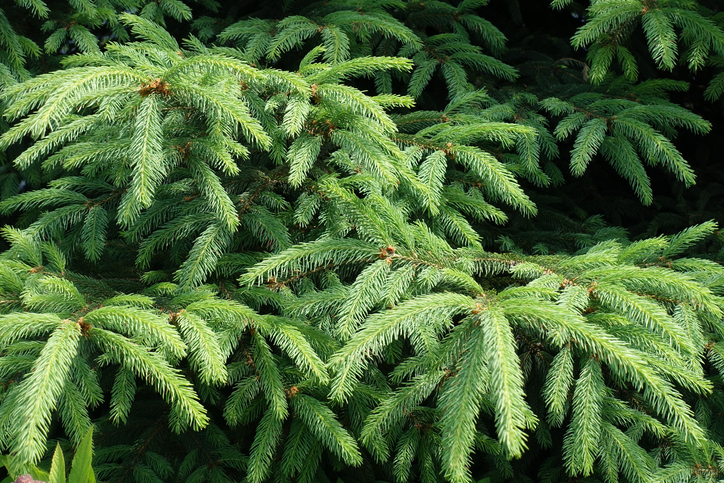
What Causes Spruce Tree Diseases In Michigan?
Spruce tree diseases in Michigan are becoming all too common. From the newly identified fungus, we discovered last year, to an old nemesis like tip blight, it seems the spruce is always under attack. But knowing where these diseases come from, and how to treat your trees if they get sick, can help you keep them in tip-top shape.
There are a couple of critical factors that are contributing to the increase in spruce tree diseases in Michigan. One is that Michigan’s climate is a little more humid than the spruce trees’ native homeland of the Rocky Mountains. This makes the trees more susceptible to pathogens.
You also have to take into account that spruce trees are sometimes planted in soil that is not ideal for growing. This will stress the tree, and again, make them more susceptible to getting sick.
So let’s get a better understanding of the spruce tree diseases that we see in Michigan and how you can decrease the risk of your trees contracting one of them.
Spruce Tree Diseases
There are several diseases that wreak havoc on spruce trees. They include:
Phomopsis Fungus
Remember that newly identified fungus we mentioned off the top? Well scientists say that it’s called the phomopsis fungus. It’s actually been around for a while and typically attacks seedlings or very young trees. But researchers say it’s now affecting more mature trees, which is why they’re calling this a new find. They also think that Phomopsis is a major contributor to the spruce decline in Michigan.
Canker Diseases
Phomopsis is in the family of canker diseases, as is Cytospora. It lives It lives beneath the bark of twigs and branches, causing entire branches to die.
Needlecasts
A needlecast fungus forms on the tree’s needles and spreads. The most common needlecast is Rhizosphaera. It’s been causing problems for years in our state. But recently, a new needlecast called Mycosphaerella has been attacking Christmas trees in the area. Needlecasts typically don’t kill a tree but will affect its overall appearance.
Diplodia Tip Blight
Diplodia tip blight (formerly known as Sphaeropsis) can kill up to 20 different species of pine trees. The fungus will live on bark and cones over the winter and then infect other parts of the tree when spring arrives. Applying fungicides can decrease the chances of tip blight developing.
Bugs That Are Bad For Spruce Trees
It’s not just fungi that are looking to take down your spruce trees. There are some bugs that you need to be on the lookout for.
Spruce Spider Mites
These tiny little critters will feed on all conifers, not just spruce trees. You’ll know you have them if you notice the inside part of your green needles turning yellow or even brownish color. That’s because they’re sucking the sap and chlorophyll from the needles.

Applying dormant oil in the early spring can keep spider mite eggs from hatching. But beware, if you have blue spruce, the oil can take away the color.
Adelgids
Spruce adelgids live in the bark and the crevices of twigs over the winter. When the weather starts to warm up, they hatch and the nymphs start feeding on the needles.
Spraying with a currently registered insecticide in late September or October will help to control adelgids. If you don’t treat them, they will keep coming back year after year.
Treating Spruce Tree Diseases in Michigan
Regular spraying and/or tree injections are the only way to know your spruce trees are protected. It’s important to note that if one tree gets sick, the chances of the disease spreading can be high. If roots grow together underground or a flying insect transports the fungus to another nearby tree, your problem will grow, but your tree won’t.
The experts at Safari Tree have multiple strategies to help combat any disease or tree-eating bug that comes along. If you’d like to learn more about our tactics, or our techniques, contact us today.





